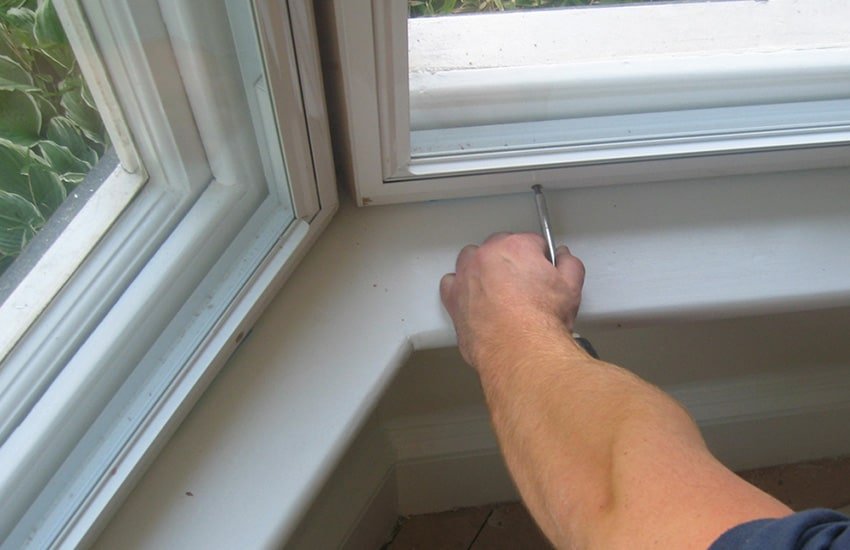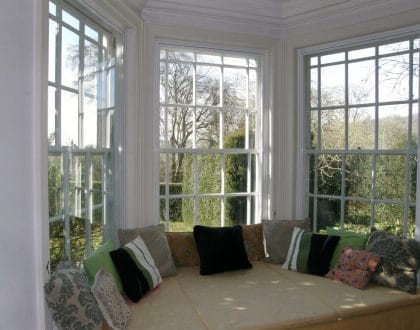Should You Make Your Own Secondary Double Glazing?

When your windows stop working properly, you can be faced with all kinds of issues on a daily basis. Cold rooms, noise pollution and condensation are just the start of it. Something needs to be done. But what?
Secondary glazing is without a doubt one of the most high-performance solutions, which can remedy all of the common problems of ineffective windows. However, to cut costs, some people consider making their own secondary double glazing.
In this post we’ll discuss whether it’s possible to make your own secondary double glazing. But more importantly, whether it’s a good idea and what alternatives are available.
Making your own secondary double glazing
Secondary glazing comprises a secondary window panel installed on the inside recess of your windows. In theory, you can make your own panels. A quick search online brings up basic instructions using polycarbonate sheeting, a few pieces of wood and self-adhesive edging strips.
It will be a little like trying to make your own house using bricks and mortar. Sure, you could probably make something resembling secondary glazing (or a house), but it’s certainly not recommended.
For one, because it would be a lot of work for very little benefit. Cutting wood to size without instructions and fiddling around with polycarbonate sheeting will result in a lot of mess. But more importantly, it won’t achieve the numerous benefits that professionally made secondary glazing can offer.
Here’s why…
Thermal retention
One of the biggest benefits of well-made secondary glazing is that it stops heat passing through your windows. The glazing is thermally efficient, it’s well sealed and the whole unit is made to measure with precision.
That ensures there is an enclosed barrier of air between the secondary glazing and your primary window. This is critical when it comes to keeping heat in through the winter or out in summer. If you make your own secondary double glazing, you simply won’t get the same results, or anything close.
Noise reduction
The same is true for noise reduction. Professionally made secondary glazing creates a sealed barrier which effectively dissipates sound waves as they try to pass through your windows. It’s a great way to achieve a more peaceful environment in your home.
In contrast, home-made options using cheap materials will do very little to stop sound in its tracks.
Cutting condensation
Condensation is almost inevitable on single-glazed windows, which are cold on the inside, drawing moisture out of the warm air inside your home. However, it can also occur on double-glazed windows where the sealing has broken down.
Whatever the case, secondary glazing can remedy the problem by adding a separate sealed unit to shut out moisture from your primary windows. Even the tiniest break or gap in secondary glazing you make yourself will let that moisture through and completely defeat the purpose.
Appearance
Arguably the biggest difference between professionally made secondary glazing and something you make yourself will be the appearance. One of the main benefits of secondary glazing is that it’s so discreet.
It allows you to improve heat and noise insulation without impacting your home’s aesthetics. That makes secondary glazing the ideal solution for listed buildings, heritage properties or just any home where you like the look of your existing windows.
In stark contrast, if you make your own secondary double glazing, it will become the focal point of any room for all the wrong reasons. That will completely diminish the character of any room and any building.
Longevity
As well as being inefficient and non-discreet, secondary glazing you make yourself will be massively limited in terms of its lifespan.
Not just because of the lower quality of materials used. Professionally designed units have mechanisms in place that make them easier to remove for cleaning or ventilation. With the need to be completely removed or taken apart for these purposes, homemade secondary glazing units are likely to fall apart over time.
DIY secondary glazing
With all of the above points in mind, making your own secondary glazing is clearly not advisable. However, there is an alternative which combines the benefits of professionally designed secondary glazing with the advantages of DIY.
At Clearview, we provide DIY secondary glazing kits that are made by professionals with DIY installation in mind. Rather than having to make your own secondary glazing from scratch, you can simply cut the unit to size and install, with clear instructions every step of the way.
Your secondary glazing will provide superior thermal efficiency and reduce noise and condensation while staying discreet and causing you no hassle at all. It’s truly the best of both worlds for you, your property and your windows.
How it works
To make sure you get the secondary glazing that’s right for your home, we ask you to take three simple steps. First, choose your window type. We have a vast array of secondary glazing types covering everything from basic non-opening windows and casements to sash and bay windows.
Next, decide between classic and forte. Our classic range is perfect for most residential properties, with the slimmest profile and high efficiency on regular window sizes. Forte is a commercial grade unit which is more robust and suitable for the larger windows typically found on commercial properties.
Finally, enter your window size. To make sure the DIY kit fits perfectly, we ask for measurements in millimetres. Don’t worry – we’ve got a full guide to measuring your windows precisely.
Get your quote today
If you want to make your own secondary glazing but don’t want it to be inefficient, get a quote for Clearview’s DIY secondary glazing kits. Our professionally manufactured kits will have your windows working better in no time without the cost of professional installation.
Best of all, we provide full support throughout the quote and installation process, so there’s no need to worry about any confusion or other issues. Put us to the test today.
Recommended Posts

Top Tips For Soundproofing Your Bedroom
08/07/2025


